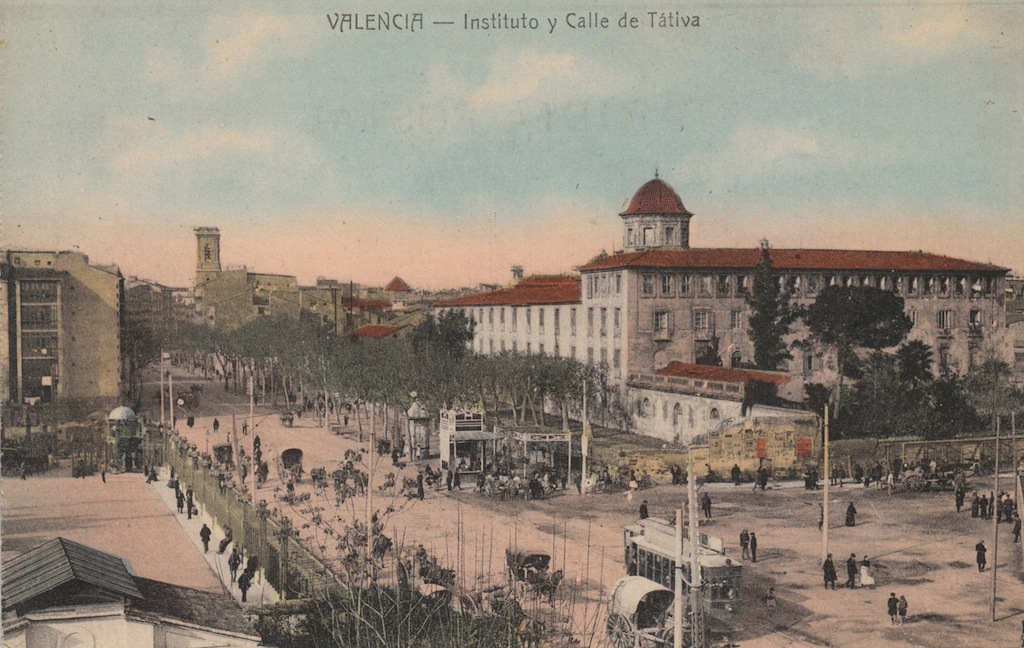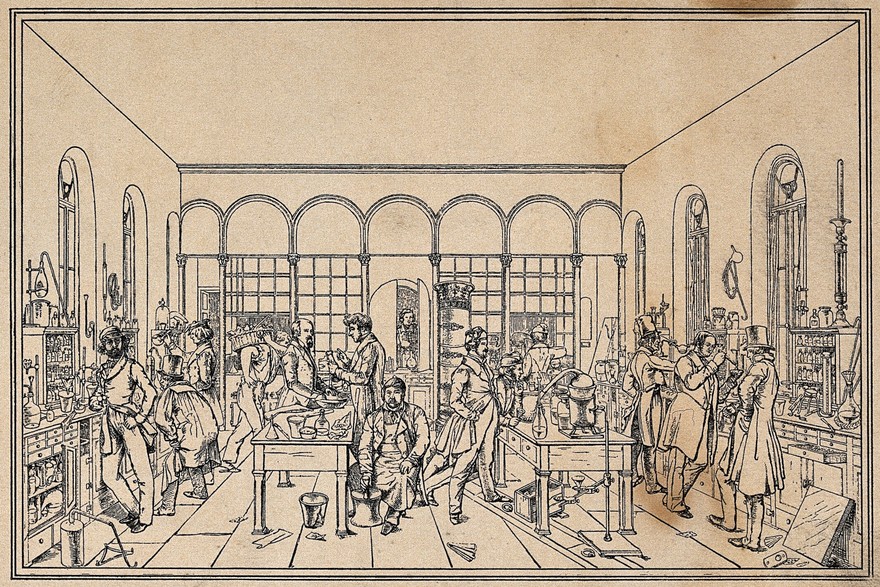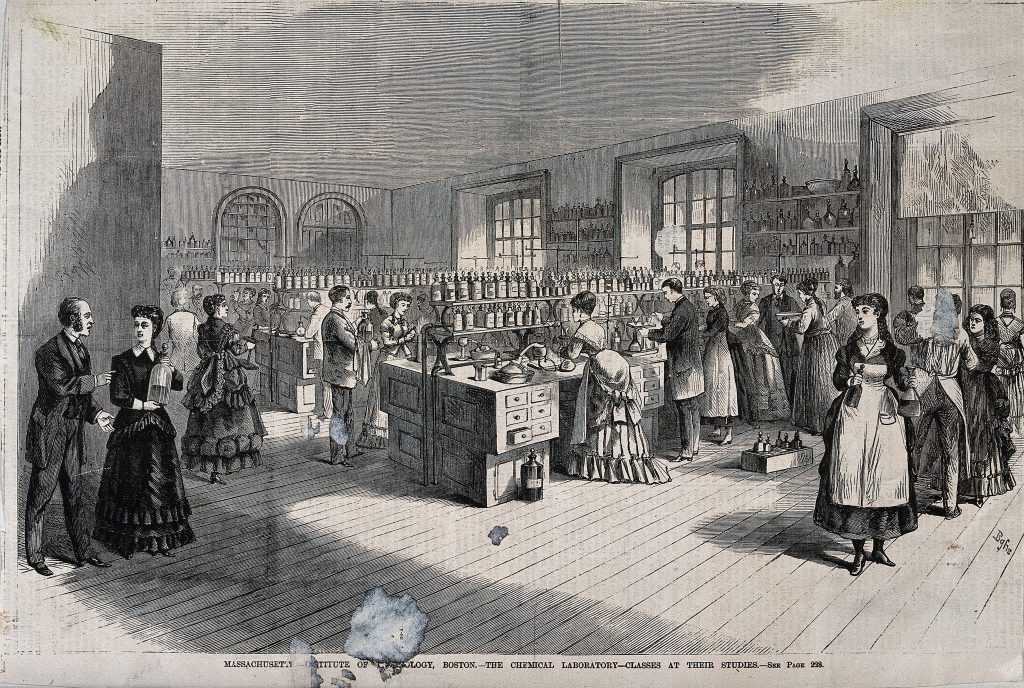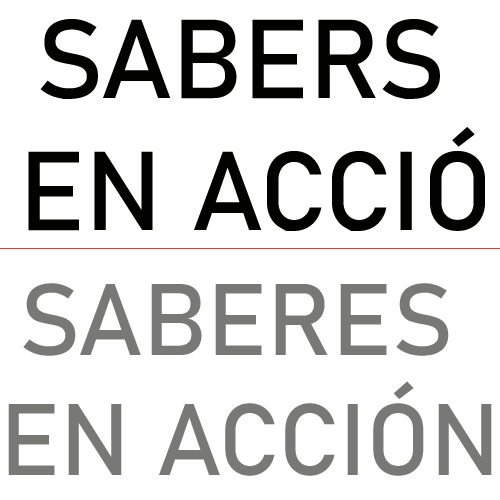—A journey through the teaching of experimental science and the training of the elite.—
There is no scientific discipline that is valued without, at least, one founding father. Chemistry has two. The father of modern chemistry, Antoine Lavoisier, and the father of modern chemistry teaching, Justus von Liebig (1803-73). The second took credit for having devised a revolutionary teaching method in which the laboratory, a distinctive space for research, has become a place of teaching par excellence. As in other sections, here we will not be pleased with this heroic image that reduces complex events to the ingenuity of one German chemist in the first third of the nineteenth century either. If we broaden our gaze and focus on a wider context, one of the most important aspects of science in the nineteenth century can be presented through Liebig: the new ways of teaching that accompanied changes in scientific institutions, analysed in other sections. During the nineteenth century, experimental sciences fully entered into old and new institutions of secondary and higher education and, in doing so, re-adapted those spaces to give rise to new knowledge, tools, objects, figures and methods. We are going to approach them to understand how experimental sciences became one more instrument at the service of the discipline, order and punishment of those who learn them.

Luis Vives Secondary School in Valencia, at the end of the 19th century. Blogspot.
From the last decades of the eighteenth century, experimental sciences began to be continuously incorporated into educational institutions. They did so through the faculties of medicine and professional colleges and schools created to train pharmacists, surgeons, veterinarians, experts of mining and metallurgy and military gunners. The College of Surgery in Cadiz, the Mining Academy in Freiberg, the Faculty of Medicine in Leiden or the School of Pharmacy in Paris are local examples of a phenomenon spread across all the European geography. From the first decades of the nineteenth century, the sciences strengthened their position in European universities, where science faculties and institutes were created, and where some professional schools were given the status of faculties. This meant academic and social recognition of great importance for disciplines such as chemistry, physics and natural history. It was also one of the first, and at that time still scarce, ways of professionalisation for its practitioners.

Experimental demonstration in a physics and chemistry classroom at Kalvskindet School in Trondheim, Norway, around 1900. Pinterest.
It is even important, given its magnitude and social consequences, to note the introduction of sciences in secondary schools, created throughout Europe during the first half of the nineteenth century. From the lycées created in France after the Revolution, the new Gymnasiums created in Prussia in the first half of the nineteenth century, to the secondary schools opened in all the provincial capitals of Spain in the middle of the nineteenth century, all these institutions were aimed at the education of the European bourgeoisie. They were places of employment for many graduates of the new faculties of science and a powerful tool for the social legitimisation of experimental sciences as academic disciplines, whose theoretical and practical content thus achieved its recognition – although it always debated – as part of the intellectual training of individuals.
The experimental sciences outlined a difficult challenge to those trying to teach them, as they had to find a way to combine the academic methods of theoretical teaching, through lessons and readings, with ways of teaching carried out in the workshops and offices of craft guilds, where apprentices were initiated in the secrets of the trade through observation and the manipulation of tools and materials. To achieve this, textbooks were rewritten, courses spaces were organised and teaching tools were made, some of which were inspired by the tools of the demonstrators of the eighteenth century and others were designed for new pedagogical uses in the new institutions. Experimental demonstration was the most widely used teaching model. Created by the anatomists of the sixteenth century, it was quickly adapted by natural philosophers in the following centuries. These authors learned how to accompany their lessons with experiments carried out by skilled assistants, so that their vigilant audience could see the described phenomena and understand the functioning of the apparatus that produced them. Furthermore, like the anatomists, they understood that the amphitheatre was the best way to organise the spaces where this way of teaching should be carried out, since it made it easier to observe what was being shown and listen to what was being explained. Chemistry and experimental physics amphitheatres spread throughout European cities in the eighteenth century, gathering a wide range of audiences. Contrary to what has been thought, this way of teaching did not necessarily place the spectator in a passive observer position. We have seen the enormous number of laboratories opened in cities such as Paris at the end of the eighteenth century and their use by very different audiences to recreate – and thereby learn – what was seen and heard in amphitheatres or read in treatises and specialised magazines. On the other hand, the laboratories linked to the amphitheatres became real teaching spaces for the apprentices assisting the teacher in the preparation of the educational experiments and also in his research, thus starting the double profession of both teacher and researcher.

Laboratory of Justus von Liebig in Giessen. Lithograph by W. Trautschold (ca. 1840). Wellcome Collection.
Lessons with demonstrations and teaching laboratories would suffer a different fate in secondary schools during the nineteenth century. The teaching methods and content of the programmes were the result of a complicated negotiation between the different figures in the classrooms of science. There, a new science professional, specialised in its teaching emerged: the science professor. With their training in the faculties of science, these new teaching professionals gradually distanced themselves from research, becoming responsible for the organisation of courses, the publication of manuals and the design of teaching methods. In a way, school subjects became independent from their equivalent academic subjects. In this work, publishers, who saw an enormous market of compulsory readers emerging, also had a great influence. Some of the great contemporary publishers strengthened their publishing industries in those years with the arrival of the textbook as a new publishing genre. Its influence on the framing and organisation of teaching content was decisive.

Practical class in the chemical laboratory of the Massachusetts Institute of Technology (Boston, ca. 1880). Wellcome Collection.
Another community attracted by the new compulsory audience of science, the makers of teaching tools, also participated in the co-production of teaching practices. The industry of precision, essential for moving from a science of qualities to a science of quantities, was established, among other reasons, thanks to the hundreds of physics cabinets and chemistry laboratories created in cities all across Europe and America. Many instrument makers managed to turn their workshops into real industries thanks to the income obtained from the sale of teaching tools, both for secondary and university education. Governments were also involved in the process of definingof the science of the classroom. With more or less contact with teachers, the publishing houses and several groups of interest, the governments of the new European states were in charge of establishing official syllabi for their areas of responsibility. These curricula defined the content of school subjects and their length within each course. Governments also played a decisive role in the choice of textbooks, either through the syllabi or through previous mechanisms of censure, official lists or controlling the content after publication. Finally, these governments also standardised, in the nineteenth century, the evaluation and qualification systems of the acquired knowledge.
School subjects became powerful disciplinary tools for those who taught and learned them. The contents and methods were organised in a hierarchy to be able to adapt them to the different levels and types of teaching, in which students were classified according to age and aptitude. The classrooms were equipped with sophisticated devices designed to train students. The experiments were used to illustrate and demonstrate the phenomena described and explained in the lessons, conveying the image of science as predictive, accurate and objective knowledge. The handling of instruments was learned through repetitive and practical exercises to train the body, similar to how the ‘paper tools’ instructed their minds. These ‘paper tools’ included a large number of written resources, charts and standardised procedures. The appearance of problems as a teaching device made it necessary to use mathematical tools and algorithms that, as in the case of chemical formulas and equations, allowed properties to be demonstrated and predicted, as well as the description of phenomena and materials, all without having to see and handle them. The success of this innovative tool had much to do with the progressive disappearance of oral exams in favour of written exercises, where those assessed stopped having to demonstrate their manual and spoken skills to teachers. Explanation, demonstration and problem-solving, calculation and written formulas became the main criterion for the awarding of prizes and punishments in the form of promotion or exclusion.
This brief overview of the classrooms of the nineteenth century allows us to understand the renewed interest in the teaching of the history of science in the last decades. This new research has allowed the old diffusionist thoughts, where the classrooms were only a space for the spreading of ideas created in laboratories and academic institutions, to be abandoned. As is shown in another section, with the specific example of the periodic system, new historical research suggests that classrooms have been, and still are, spaces of collective creativity for science, where new knowledge, values and practices are produced and spread. Thus, it is widely known that classrooms play a crucial role, both for the reproduction of scientific communities and for the construction of the social image of science among the population. Its analysis cannot be carried out from old positivist perspectives.
Antonio García Belmar
IILP-UA
José Ramón Bertomeu Sánchez
IILP-UV
How to cite this paper:
García Belmar, Antonio, and Bertomeu Sánchez, José Ramón. Science in the classroom. Sabers en acció, 2021-01-04. https://sabersenaccio.iec.cat/en/science-in-the-classroom/.
Find out more
You can find further information with the bibliography and available resources.
Recommended reading
Bensaude-Vincent, Bernadette; García Belmar, Antonio; Bertomeu-Sánchez, José R. L’émergence d’une science des manuels: les livres de chimie en France (1789-1852), Paris: Archives contemporaines ; 2003.
Olesko, Katherine. “Science Pedagogy as a Category of Historical Analysis: Past, Present, and Future” Science & Education. 2006; 15:863–880.
Studies
Kaiser, David, Pedagogy and the Practice of Science: Historical and Contemporary Perspectives. Cambridge, MA: MIT Press; 2005.
Olesko, Katherine. Physics As A Calling: Discipline And Practice In the Königsberg Seminar for Physics. Cornell Univ. Press; 1991.
Olesko, Katherien., Science Education in the Historical Study of the Sciences. In Michael R. Matthews (ed.), International Handbook of Research in History, Philosophy and Science Teaching, 2014, Springer, 1965-1990.
Rudolph, John L. How We Teach Science. What’s Changed, and Why It Matters, Harvard University Press; 2019.
Simon Josep. Communicating Physics: The Production, Circulation and Appropriation of Ganot’s Textbooks In France And England, 1851—1887, London: Pickering &Chatto; 2011.
Sources
Memoria acerca del estado del Instituto Provincial de Segunda Enseñanza de Alicante, Alicante, Imprenta y litografía de Pedro Ibarra, 1863. Available here.
Catalogue explicatif et illustré des instruments de physique expérimentale, d’optique expérimentale, chimie, astronomie, minéralogie, chirurgie, etc… qui se fabriquent et se trouvent dans les ateliers et magasins de la maison Charles-Chevalier, ingénieur, Paris, Impr. Bonaventure et Ducessois, 1860. Available here.
Websites and other resources
MANES research centre dedicated to the historical study of school textbooks in Spain, Portugal and Latin America, especially in the nineteenth and twentieth centuries. Available here.
Emmanuelle database, dedicated to registering the entirety of school textbooks published in France since 1789. Available here
COMIC. Database of scientific instruments kept in secondary and higher education institutions in Spain. Available here.



